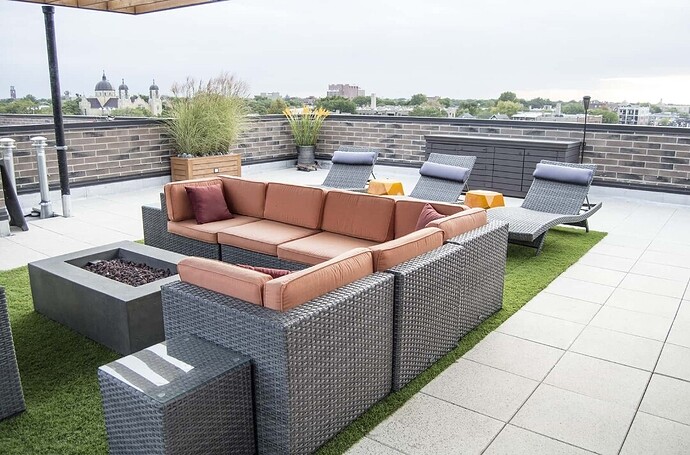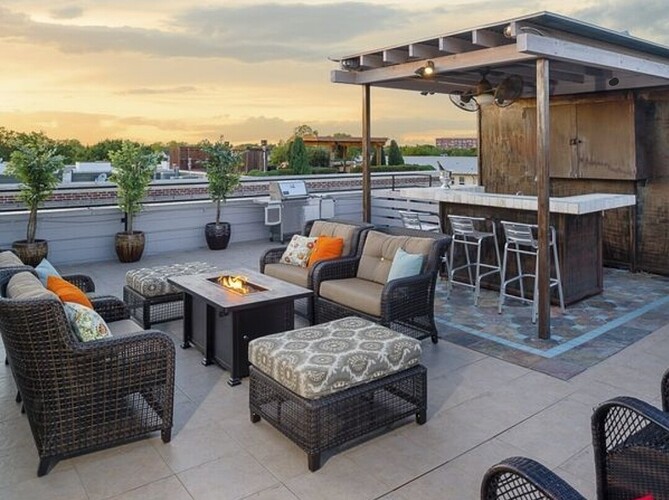The Appeal of Rooftop Living
Rooftop patios and lounges offer a unique escape from the hustle of daily life. Elevated above street level, they provide fresh air, natural light, and often unobstructed views of the surrounding landscape or skyline. Unlike traditional backyards, rooftops create a sense of privacy and exclusivity, making them ideal for both quiet retreats and lively gatherings. For urban dwellers with limited outdoor space, a rooftop lounge is a creative way to connect with nature without leaving home.
Designing Functional and Stylish Spaces
The design of a rooftop lounge or patio should balance function, safety, and aesthetics. Durable flooring, such as composite decking, stone pavers, or weather-resistant tiles, creates a solid foundation that can withstand outdoor conditions. Furniture should be lightweight yet sturdy, with materials like aluminum, teak, or rattan that resist moisture and UV damage. Zoning different areas—such as dining, lounging, and cooking—ensures the rooftop serves multiple purposes. Built-in seating, planters, and pergolas can define spaces while maximizing square footage.
Amenities for Comfort and Entertainment
Modern rooftop lounges often include amenities that rival ground-level outdoor living areas. Fire pits, outdoor kitchens, and grills create spaces for cooking and socializing, while plush seating and shade structures ensure comfort throughout the day. Lighting—ranging from string lights to integrated LED systems—extends usability into the evening, setting a relaxing or festive mood. Sound systems, water features, and even small plunge pools or hot tubs can be incorporated for luxury and ambiance.
Green and Sustainable Features
Sustainability is a growing focus in rooftop design. Green roofs and planters not only beautify the space but also improve insulation, reduce rainwater runoff, and promote biodiversity. Solar panels can be integrated into lounge designs, powering lighting and appliances while reducing energy costs. Native plants and low-maintenance greenery create a natural atmosphere without excessive upkeep, further enhancing the eco-friendly appeal.
Practical Considerations
Safety and structural integrity are essential when converting rooftops. Professional assessment ensures the roof can support added weight from furniture, amenities, and people. Railings or glass barriers provide safety without obstructing views, while waterproofing and drainage systems protect the underlying structure. Accessibility is another key factor, whether through staircases, lifts, or direct connections to upper floors.
Conclusion
Rooftop lounges and patios redefine outdoor living by transforming underutilized roof space into functional, stylish, and inviting areas. By combining smart design, durable materials, and thoughtful amenities, homeowners can create elevated spaces that serve as private retreats, social hubs, or eco-friendly sanctuaries. These rooftop escapes not only enhance day-to-day living but also add lasting value and uniqueness to modern homes

